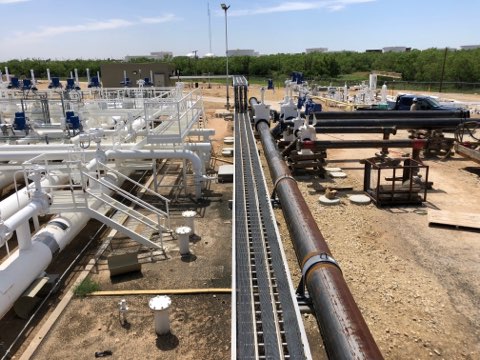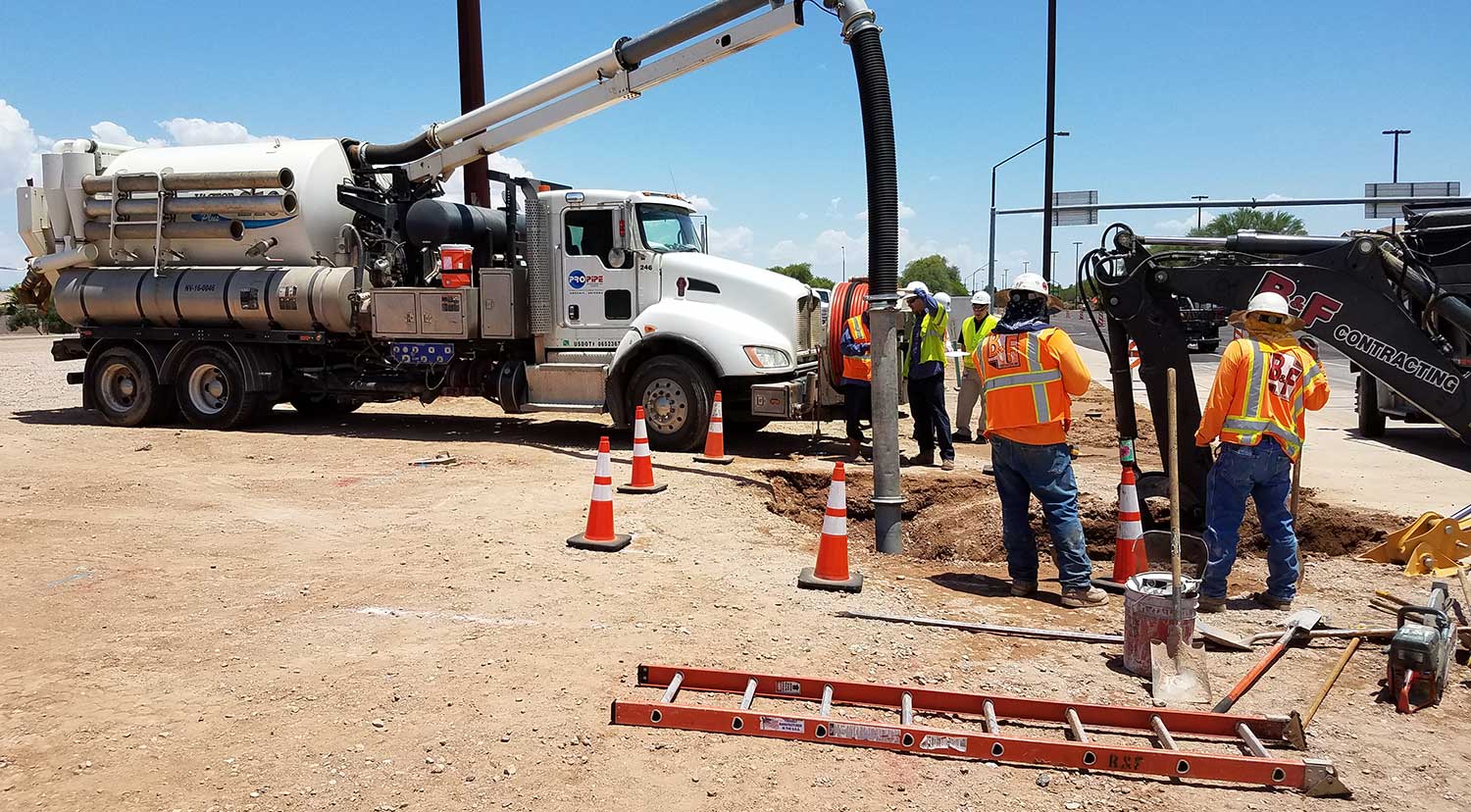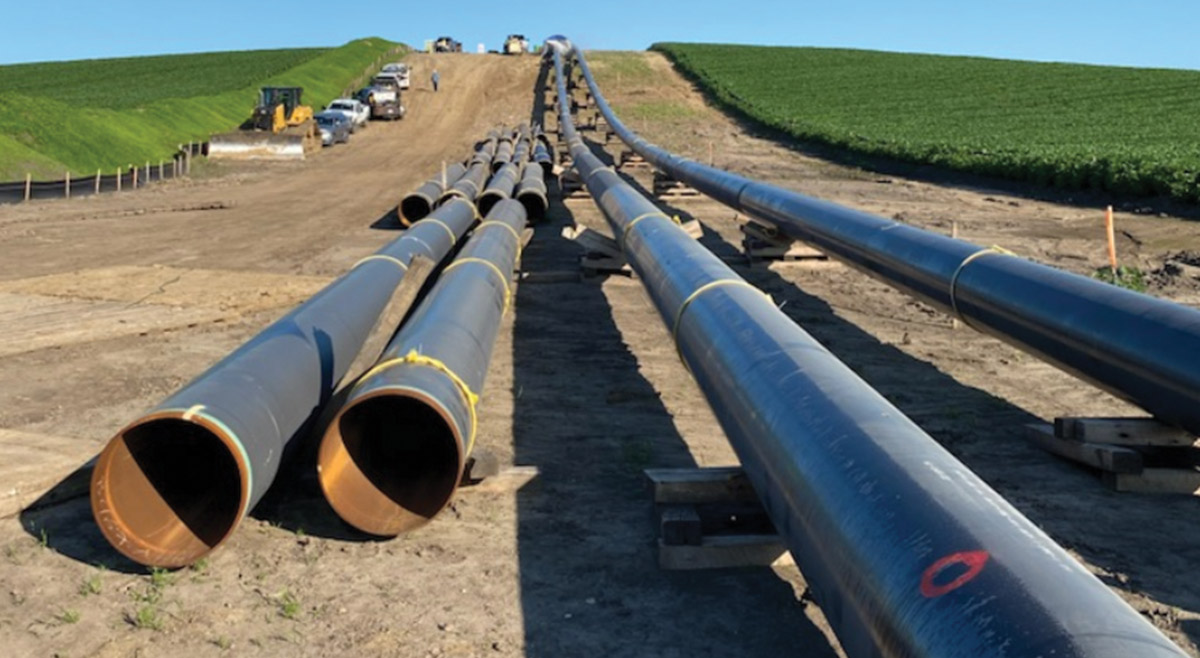Pipeline Construction Services Checklist: From Planning to Completion
Wiki Article
Discovering the current Developments in Pipeline Construction Solutions for Modern Projects
The Pipeline Construction market is going through considerable modifications. Technologies such as clever products and robotics are reshaping standard techniques. These innovations assure to enhance efficiency and security. In addition, AI technologies are boosting project monitoring capacities. As these aspects assemble, they elevate inquiries regarding their long-lasting influence on sustainability and cost. Understanding these innovations is vital for stakeholders seeking to navigate this developing landscape. What effects do they hold for future jobs?The Surge of Smart Products in Pipeline Construction
As the demand for more reliable and sustainable Pipeline systems enhances, the assimilation of wise products has arised as a transformative service in Pipeline Construction. These advanced products have unique residential properties that enhance the performance and durability of pipes. For example, self-healing polymers can instantly repair minor leakages, greatly reducing maintenance costs and downtime. In addition, products installed with sensors can keep track of architectural stability and ecological conditions, enabling for real-time information collection and evaluation.Smart materials are corrosion-resistant and usually lightweight, which not just simplifies installment however likewise prolongs the life expectancy of the systems. Their flexibility enables pipes to stand up to extreme ecological conditions, advertising security and dependability. As industries progressively focus on sustainability, using eco-friendly wise products contributes to minimized environmental influence. Overall, the surge of smart materials marks a remarkable shift in Pipeline Construction, paving the method for ingenious options to meet contemporary framework demands.
Innovations in Robotics for Installment and Maintenance
The assimilation of smart materials in Pipeline Construction is complemented by advancements in robotics, which are revolutionizing installment and maintenance processes. Robotic innovations, such as automated welding systems and drones, boost effectiveness and precision, decreasing human mistake and lessening security threats. These robots can operate in difficult atmospheres, ensuring that setups are performed in remote or harmful areas without putting employees in danger.Moreover, robotic evaluation devices outfitted with innovative sensing units give real-time information on Pipeline integrity, enabling positive maintenance. They can identify leakages or architectural weaknesses, enabling prompt treatments that extend the lifespan of Pipeline systems. Making use of robotics not just increases the Construction timeline yet additionally maximizes resource appropriation, resulting in cost financial savings. As these technologies remain to evolve, they are set to play a crucial duty in forming the future of Pipeline Construction, guaranteeing reliability and sustainability in framework growth.
AI-Driven Job Administration Tools Transforming Workflow
AI-driven project administration devices are improving workflows in Pipeline Construction by boosting decision-making processes with improved access to real-time information analytics. These tools make it possible for teams to react quickly to task advancements, consequently boosting efficiency. Moreover, streamlined communication networks foster partnership amongst stakeholders, additionally maximizing project end results.Improved Decision-Making Procedures

Real-Time Information Analytics
Harnessing real-time data analytics, contemporary project administration tools reinvent operations in Pipeline Construction. These advanced tools utilize expert system to provide immediate understandings right into task performance, resource allocation, and possible risks. By constantly keeping an eye on essential efficiency indications, teams can promptly adjust to changing problems, maximizing labor and materials usage. The integration of real-time data allows for even more enlightened decision-making, minimizing hold-ups and reducing costs. In enhancement, anticipating analytics can determine patterns and projection difficulties prior to they escalate, enhancing total task effectiveness. Because of this, Pipeline Construction business that embrace these AI-driven devices can boost task timelines and results, ensuring they continue to be affordable in an increasingly intricate market landscape. This innovation notes a significant change towards data-centric administration methods.Structured Communication Channels
Reliable interaction is critical in Pipeline Construction, where various stakeholders need to work together effortlessly to guarantee job success. The intro of AI-driven job administration devices has reinvented interaction networks within the industry. These devices assist in real-time details sharing, permitting teams to accessibility updates, share documents, and track progress efficiently. By automating routine tasks and providing a central system for communication, these technologies remove misconceptions and reduce delays. Boosted exposure right into job timelines and source allowance fosters liability among staff member. Additionally, AI analytics can identify prospective communication voids, making certain proactive analytical. Ultimately, streamlined interaction channels not just improve workflow but also boost total task performance, making it possible for Pipeline Construction companies to fulfill modern demands effectively.Boosted Safety Protocols With Innovation Combination
The combination of technology in Pipeline Construction has actually resulted in boosted safety and security protocols. Real-time monitoring systems, wearable safety gadgets, and automated danger evaluations are currently necessary parts in lessening dangers on job sites. These developments not just boost worker safety and security but additionally streamline compliance with market guidelines.Real-Time Monitoring Solutions
How can real-time surveillance systems transform Pipeline Construction safety procedures? By integrating advanced modern technology, these systems give continuous surveillance of Construction activities, ensuring immediate detection of potential hazards. Sensing units and video cameras can check environmental conditions, equipment efficiency, and workforce activities, providing vital information in genuine time. This positive method enables job supervisors to identify threats before they rise, greatly enhancing precaution on-site. On top of that, real-time surveillance promotes compliance with governing needs, ensuring that security standards are fulfilled regularly. The capability to examine data instantaneously supports informed decision-making, making it possible for timely interventions. Consequently, Pipeline Construction jobs can operate a lot more effectively while guarding the health of workers and lessening mishaps, consequently changing the sector's security landscape.Wearable Safety Tools
Regularly, wearable security tools are being integrated right into Pipeline Construction to boost safety and security procedures. These ingenious devices, consisting of wise headgears, vests, and this link wristbands, are made to check worker health and ecological problems in real-time. Furnished with sensors, these gadgets can find dangers such as poisonous gas direct exposure, extreme warm, or high noise levels, giving prompt alerts to workers and supervisors. In addition, wearable innovation commonly includes GPS monitoring attributes, enabling reliable area surveillance of employees on-site. This capacity not just help in quick response throughout emergency situations yet additionally improves general project management. By prioritizing employee safety and security via innovation integration, Pipeline Construction companies are making significant strides in lowering crashes and advertising a culture of safety and security within the market.
Automated Risk Evaluations
While conventional danger evaluations usually rely on hand-operated assessments, the assimilation of like it automated danger evaluation modern technologies is transforming safety protocols in Pipeline Construction. These advanced systems take advantage of data analytics, expert system, and artificial intelligence to determine potential threats much more properly and effectively. By continuously monitoring ecological problems, devices condition, and employee actions, automated analyses provide real-time understandings that boost decision-making. This proactive method minimizes the possibility of mishaps and enhances conformity with security policies. Furthermore, automated risk analyses can be updated promptly, making sure that all stakeholders have access to the current info. Consequently, Pipeline Construction projects take advantage of a much safer job environment, decreasing disruptions and cultivating a society of security via modern technology integration.Lasting Practices in Pipeline Construction
As the need for energy facilities increases, the Pipeline Construction market significantly prioritizes sustainable techniques that reduce environmental effect. Companies are taking on eco-friendly materials and sophisticated Construction techniques to reduce their carbon footprint. The use of trenchless innovation enables for Pipeline installment with marginal disturbance to the surrounding atmosphere, maintaining all-natural habitats and minimizing soil erosion.
Furthermore, the execution of renewable resource resources, such as solar or wind, to power Construction tasks is getting grip. This shift not just lowers dependence on fossil fuels however also enhances the total sustainability of Pipeline jobs. Furthermore, efficient waste administration practices, including reusing and recycling products, are coming to be standard in the market.
Real-Time Monitoring and Predictive Maintenance Solutions
The change in the direction of lasting practices in Pipeline Construction has actually led the way for the assimilation of real-time monitoring and anticipating upkeep solutions. These modern technologies utilize advanced sensors and information analytics to continuously evaluate Pipeline honesty and functional performance. By collecting information in genuine time, drivers can discover abnormalities such as leakages or pressure declines prior to they intensify into serious concerns. This aggressive strategy not just minimizes environmental threats however additionally minimizes downtime and upkeep prices.Anticipating upkeep utilizes algorithms to forecast possible failures based on historical data and present performance metrics. This enables timely interventions, maximizing maintenance routines and source allotment. In general, real-time surveillance and predictive maintenance remedies represent a significant advancement in Pipeline Construction, enhancing security and reliability while supporting sustainability goals. As markets remain to accept these innovations, the operational landscape of Pipeline management is readied to develop substantially, ensuring lasting viability and efficiency.
The Function of Drones in Checking and Inspection
Drones have emerged as transformative devices in the checking and evaluation of pipelines, providing boosted performance and precision. Their ability to record high-resolution photos and videos from various angles permits complete assessments of Pipeline stability without taking the chance of human safety and security. Outfitted with advanced sensors and thermal imaging capacities, drones can spot leakages, rust, and architectural abnormalities find out here now that might not show up to the nude eye.Additionally, the implementation of drones greatly lowers assessment time, allowing quicker decision-making for maintenance and repair work. This effectiveness converts to set you back financial savings and marginal disturbance to bordering settings. Drones can additionally access hard-to-reach locations, such as tough terrains or elevated frameworks, better broadening the extent of evaluations.
As the Pipeline industry continues to accept technological developments, the integration of drones into surveying and assessment procedures is anticipated to expand, establishing brand-new requirements for functional excellence and safety in Pipeline Construction solutions.
Often Asked Concerns
What Are the Expenses Connected With Modern Pipeline Construction Innovations?
The prices related to modern Pipeline Construction innovations typically include innovative products, specialized labor, and innovative innovation. These factors contribute to greater first financial investment, yet can result in long-lasting financial savings via enhanced effectiveness and reduced upkeep needs.Exactly How Do Governing Changes Influence Pipeline Construction Technologies?
Regulatory modifications substantially affect Pipeline Construction technologies by necessitating the adoption of more secure, a lot more efficient approaches. Conformity needs usually drive advancement, bring about developments in products, style, and Construction strategies that enhance total project sustainability and security.What Skills Are Required for Jobs in Advanced Pipeline Construction?

Careers in innovative Pipeline Construction need knowledge in design principles, task administration, safety and security protocols, and ecological guidelines. In addition, skills in technology combination, synergy, and problem-solving are crucial for going across the complexities of contemporary infrastructure tasks.
How Can Firms Guarantee Conformity With Environmental Specifications?
To assure conformity with ecological requirements, business must implement rigorous training programs, conduct routine audits, and adopt best methods in sustainability. Involving with stakeholders and keeping track of regulatory modifications even more reinforces their commitment to environmental stewardship.
What Are the Key Difficulties Facing Pipeline Construction Today?
The key obstacles facing Pipeline Construction today consist of regulatory compliance, environmental worries, changing material prices, labor lacks, and the requirement for innovative modern technology integration (Pipeline Construction Services). These aspects make complex project timelines and total performance in the industryAs the demand for extra reliable and lasting Pipeline systems increases, the assimilation of clever materials has actually arised as a transformative solution in Pipeline Construction. AI-driven project monitoring devices are improving process in Pipeline Construction by boosting decision-making processes through enhanced accessibility to real-time data analytics. While task monitoring in Pipeline Construction has traditionally counted on hands-on procedures, the assimilation of advanced devices greatly boosts decision-making capacities. Utilizing real-time data analytics, contemporary project administration devices reinvent process in Pipeline Construction. Professions in advanced Pipeline Construction require know-how in design concepts, job management, safety and security protocols, and ecological laws.
Report this wiki page